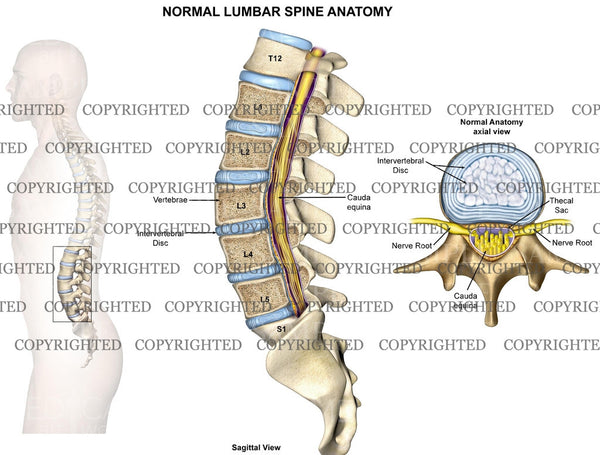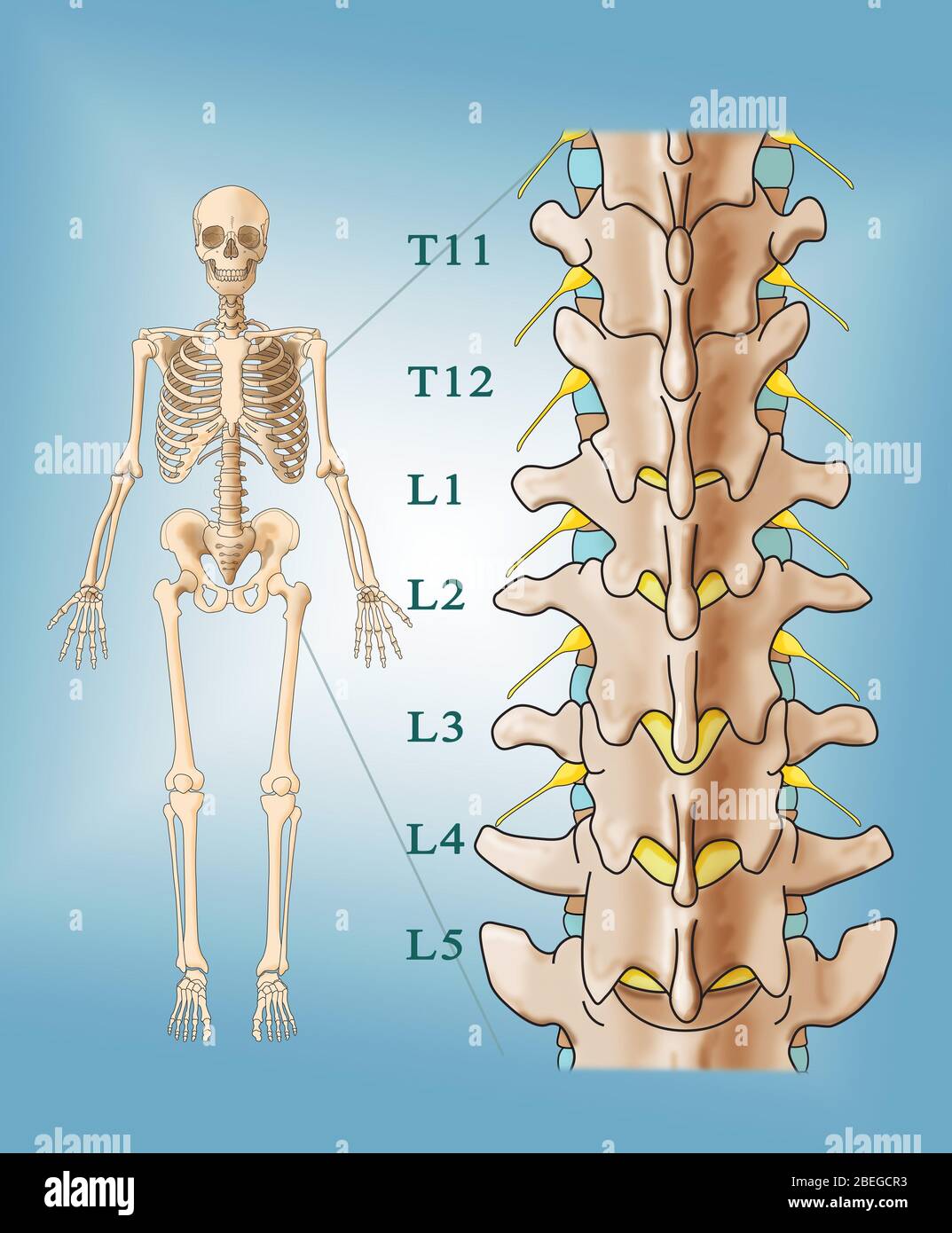

(Note: In the cervical spine, the interspinous and supraspinous ligaments thicken and combine to form the nuchal ligament).

Interspinous ligament: Connects the spinous processes of adjacent vertebrae.Ligamentum flavum: Connects the laminae of adjacent vertebrae.Anterior and posterior longitudinal ligaments: Long ligaments that run the length of the vertebral column, covering the vertebral bodies and intervertebral discs.They can be divided into two groups those present throughout the vertebral column, and those unique to the lumbar spine. The joints of the lumbar vertebrae are supported by several ligaments. Between vertebral arches - formed by the articulation of superior and inferior articular processes from adjacent vertebrae.This is a type of cartilaginous joint, known as a symphysis. Between vertebral bodies - adjacent vertebral bodies are joined by intervertebral discs, made of fibrocartilage.Both of these articulations are not unique to the lumbar vertebrae, and are present throughout the vertebral column.

There are two types of joint in the lumbar spine. Fig 1.1 - Superior view of a lumbar vertebrae, showing its characteristic features. The lumbar spine (low back) is made up of five lumbar vertebrae (backbones) that are separated by five intervertebral discs (discs), the lowest of which sits on. This article will look at the osteology of the lumbar vertebrae, examining their characteristic features, joints and their clinical correlations. This supports the lumbar spine in its main function as a weight bearing structure. It is made up of five distinct vertebrae, which are the largest of the vertebral column. The lumbar spine is the third region of the vertebral column, located in the lower back between the thoracic and sacral vertebral segments. Fig 1.0 - Overview of the location of the lumbar vertebrae It has a notably large vertebral body and transverse processes as it carries the weight of the entire upper body. The fifth lumbar vertebrae, L5, has some distinctive characteristics of its own. Mammillary processes can be found on the posterior surface of each superior articular process. They act as sites of attachment for deep back muscles.They act as sites of attachment for deep back muscles. Accessory processes can be found on the posterior aspect of the base of each transverse process.Articular processes have nearly vertical facets.Transverse processes are long and slender.Other features of a typical lumbar vertebrae: The vertebral foramen is triangular in shape. They are deeper anteriorly than posteriorly, producing the lumbosacral angle (the angle between the long axis of the lumbar region and that of the sacrum). The vertebral bodies are large and kidney-shaped. Although the lumbar vertebrae lack some of the more distinctive features of other vertebrae, there are several characteristics that help to distinguish them.


 0 kommentar(er)
0 kommentar(er)
